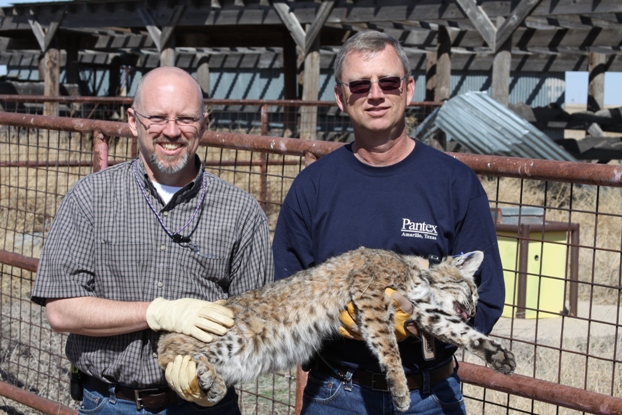Wild Pantex – Fifteen Years
Article by Jim Ray, Pantex Wildlife Biologist/Scientist
It staggered me a little bit when my department manager handed me a 15-year Milestone Award recently. Good grief, where has time flown! My nine years as a biologist with the Texas Parks and Wildlife Department seemed like a nice, long career, and here I am not too far off from doubling that here at the U. S. Department of Energy/National Nuclear Security Administration (USDOE/NNSA) Pantex Plant. I figure that it is now time for a little reflecting on my time at the primary facility for the maintenance and disassembly of the nation’s nuclear weapons arsenal.
In October of 1999, I became the wildlife biologist/scientist for the operating contractor of the Pantex Plant – today that is Consolidated Nuclear Security, LLC. It has been a great place to work and I have enjoyed the ride from having to make a “decision in the face of the unknown,” to going for it, and then gaining the support that has led us to have more interaction with the outside wildlife community, a leadership role in the agency’s accomplishments under a government-wide migratory bird initiative, and the initiation of a wildlife research program that not only answers our questions, but also contributes to the wildlife literature.
It has been great working with agronomist, Monty Schoenhals, in terms of land management and the “habitat layer” that not only is good for native wildlife, but it is also good for the land itself. When you are meeting your management objectives and a neighboring cattleman incorporates your concepts on his own land – you know that you are doing some good. When your plans that guide soil, water and wildlife conservation are certified by the state Soil and Water Conservation Board – you know that you are doing some good.
I smile every time someone says something like “one of the great perks to working at Pantex is to see all the wildlife.” This was the case when I received reports of the bald eagles harassing the geese above our water-treatment facility, the pronghorn doe tending twins a short distance from our main working area, and the Pantex Plant’s first recorded litter of bobcat kittens curiously playing with a creature strange to them – our first record of an Armadillo. One weekend night, Pantex Fire Department personnel called me at home just to describe the blow-by-blow details of a battle that a mother bobcat had with a large bull snake – one which the cat won and carried the serpent off to feed her kittens.
My highlight memories include things like the customary “fist bumps” with students of West Texas A&M University upon completion of “working up” and collaring a captured bobcat, hearing the exciting story from two of my co-workers of a badger and a family of coyotes cooperatively hunting together, and feeling the excitement of Texas Tech University students when we release satellite-marked Swainson’s hawks into the wild blue yonder.
I will never forget the time I was radio-tracking a female bobcat, only to see her look past the front of my vehicle in a serious stare, emit a bird-like coo that I would have never guessed could come from such a predator, and watched two bobcat kittens instantly stop forward progress and drop from sight, having merged natural camouflage with the soil and grasses. That was a scene rarely observed by man, I assume.
As for our successes, let it never be said that we undervalue the fantastic contributions of our collaborators: the students, graduate students and professors of Texas Tech University, West Texas A&M University, University of Manitoba, and York University; nor, the many natural resource entities that we consult, the Purple Martin Conservation Association, or the many cooperative private landowners around us. Every individual involved has worked on our facility or otherwise observed our commitment to the environment – that is of great value in itself.
My how time has flown! Onward!

Photo: West Texas A&M University's Dr. Raymond Matlack (left) and Pantex Wildlife Biologist, Jim Ray, with a recaptured Pantex male bobcat, sporting its second G.P.S. satellite tracking collar.
